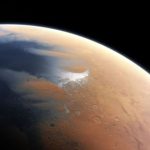Key Takeaways:
- Proposals to install telescopes on the Moon’s far side offer a promising solution to overcome atmospheric interference, providing clearer views of celestial phenomena.
- Detection of magnetic fields on exoplanets could be pivotal in determining their potential for supporting life, shielding against harmful stellar activity.
- Led by astronomers like Jack Burns, the FARSIDE mission aims to deploy a lunar rover equipped with antennas to survey the sky across low radio frequencies, potentially identifying habitable planets and monitoring host star activity.
- Future lunar telescopes may include large infrared instruments, offering the ability to detect faint planets and monitor their atmospheric conditions, potentially revealing insights into exoplanetary weather and seasons.
- Collaboration with NASA’s Artemis program presents opportunities to overcome logistical challenges and establish sustainable lunar installations, ushering in a new era of astronomical discovery.
For many years, even preceding the renowned Hubble telescope’s launch, astronomers have been sending spacecraft into orbit to evade atmospheric disturbances that distort images captured by ground-based telescopes. However, even these orbital altitudes prove inadequate for capturing clear signals from certain cosmic entities.
Astronomers now advocates for the establishment of telescopes on the lunar surface. In a series of recently published studies, they propose that our celestial neighbor, particularly its far side, offers an ideal location for radio and infrared telescopes. These instruments could potentially identify and examine planets outside our solar system capable of supporting life, as well as investigate the enigmatic “dark ages” of the early universe, occurring approximately a million years after the Big Bang, when the first stars emerged.
Joseph Silk, an astrophysicist at the University of Oxford and author of several papers in the series, asserts, “The time has come to initiate discussions about lunar projects. With a significant international focus on lunar exploration, it’s imperative to prioritize scientific endeavors.”
While sensitive radio telescopes such as the Low-Frequency Array (LOFAR) in Europe have been constructed on Earth, they encounter limitations. The Earth’s upper atmosphere obstructs radio signals shorter than approximately 10 megahertz, restricting the telescopes’ observational capabilities, explains Jack Burns, an astronomer at the University of Colorado and director of the Network for Exploration and Space Science. Moreover, the proliferation of radio signals from human communication technologies, including cellphones, Wi-Fi, and satellites, poses interference challenges. Space-based telescopes offer improvements, yet even in orbit, they remain susceptible to interference. Burns emphasizes, “The far side of the Moon stands as the sole region in the inner solar system characterized by true radio silence.”
Jake Turner, an astronomer at Cornell University involved in ground-based telescopic observations, remarks, “I dedicated two years of my Ph.D. to devising methods to mitigate [radio] interference.” Turner and his colleagues employ radio astronomy to detect magnetic fields emitted by certain planets.
Notably, the presence of magnetic fields, contingent upon a planet’s internal composition, could significantly influence its suitability for hosting life. Many exoplanets discovered thus far orbit red dwarf stars, which frequently emit large quantities of charged particles capable of eroding a planet’s atmosphere and endangering potential life forms. A magnetic field serves as a protective barrier against such stellar phenomena.
Although Turner has devised techniques to detect the magnetic fields of sizable planets, smaller Earth-sized worlds, potentially conducive to life, emit radio waves too faint and at frequencies too short to penetrate Earth’s atmospheric noise. A lunar-based telescope would leverage the Moon’s shielding effect, mitigating Earth’s radio interference.
This concept underpins the proposed FARSIDE mission led by Burns, envisioning a robotic lunar rover deploying an antenna array capable of surveying the entire sky across low radio frequencies. Objectives include identifying habitable planets through magnetic field detection and monitoring energetic particles emitted by host stars. If endorsed by NASA, construction of the telescope could commence in the late 2020s, with deployment soon thereafter.
Although FARSIDE would constitute a relatively small and straightforward mission compared to Earth’s colossal telescopes, Silk and his associates speculate that future endeavors could involve assembling a large infrared telescope on the Moon. To maintain operational efficiency, such telescopes necessitate cool environments, potentially facilitated by positioning within permanently shadowed regions, such as craters near the lunar south pole. This infrared telescope could detect faint planets and monitor their atmospheric conditions.
Construction of lunar telescopes offers advantages over terrestrial counterparts, including immunity to terrestrial wind disturbances and reduced gravitational forces. Despite the lunar far side’s unobservable nature from Earth, spacecraft like NASA’s Lunar Reconnaissance Orbiter provide detailed terrain mapping, aiding in site selection. Subsequent logistical challenges involve equipment transportation, assembly by robots or astronauts, and data transmission to Earth-based scientists via satellite.
However, lunar surface conditions present obstacles such as dust accumulation and seismic activity induced by meteor impacts. Nonetheless, proximity to potential lunar bases could facilitate telescope maintenance and upgrades by robots or astronauts.
Martin Elvis, a Harvard astrophysicist and contributor to the series, highlights another concern: while the Moon boasts ample surface area, prime astronomical locations, like the Peaks of Eternal Light, are limited. Elvis anticipates disputes over these sought-after sites.
Astronomers like Burns aim to address ethical and logistical hurdles by collaborating with NASA’s Artemis program, which plans lunar missions to deploy landers, rovers, and eventually humans. Half a century after the first lunar landing, a new era of lunar exploration beckons, potentially accompanied by astronomical installations.


